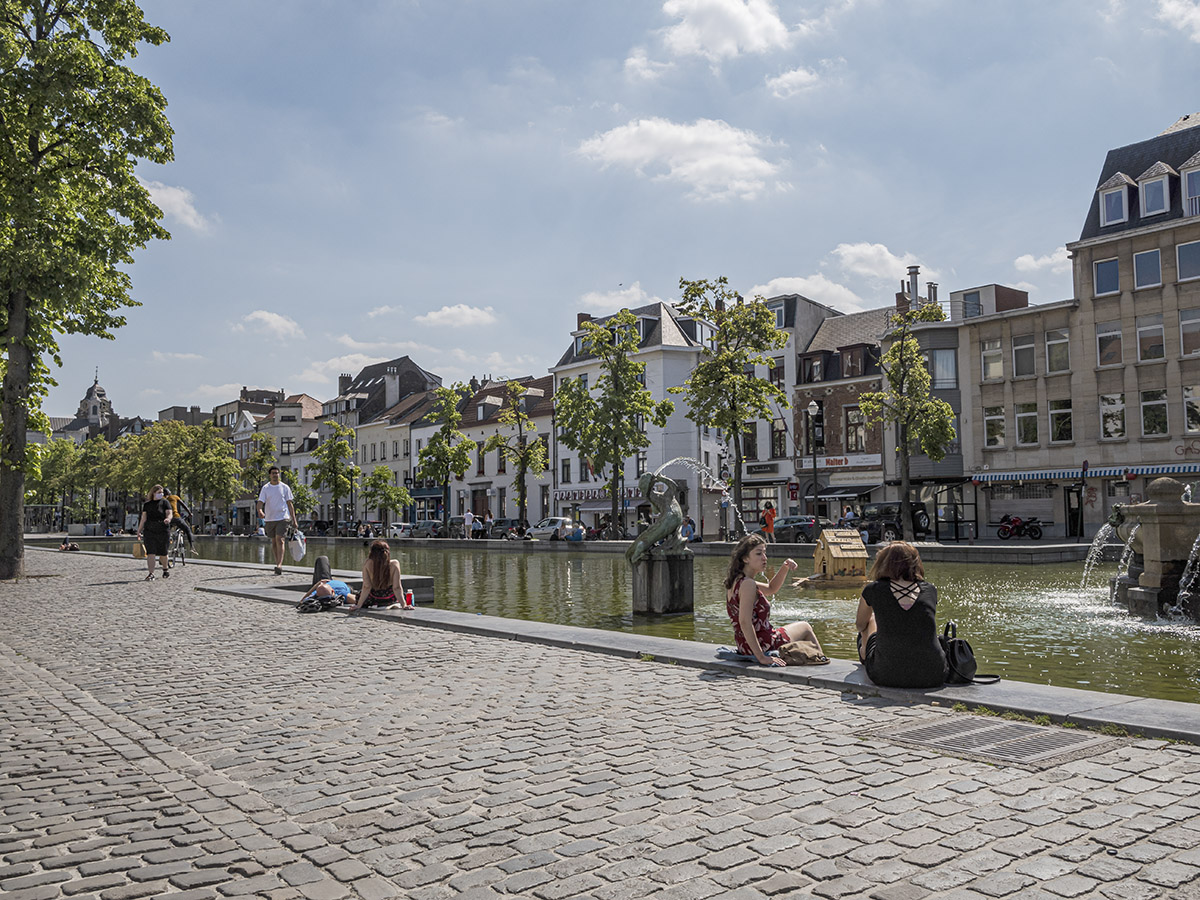The awe-inspiring Atomium

If one building has put Brussels on the map, it’s the Atomium. This steel giant from the 50s is one of the most modern constructions in the city to date. It consists of nine interconnected spheres, which made it the crown jewel of the 1958 World Fair in Brussels.
The building was supposed to be demolished after six months, as soon as the fair closed its doors. Yet, the love of the Bruxellois for their out-of-this-world monument meant that you can still visit the metal mammoth today.
EXPO ‘58
Like Paris, Brussels owes its most famous building to the lucky fact that the World Fair came to the city. Brussels had the honour hosting the first big fair since the Second World War. Its goal was to show the visitors the delights of the modern world: cars, escalators and state-of-the-art architecture. But not everything was as modern as you might imagine; as Congo was still a Belgian colony at the time, back in ‘58, the fair also hosted a human zoo, where African people were ‘exhibited’. Luckily, most pavilions were more tasteful than that. Countries like Japan, the United States, Canada, the Soviet Union and the Netherlands built a pavilion each to unveil their history and future to the world, and so did many multinationals, such as Coca Cola and Philips. The brightest star of the event, however, was the massive construction that is the Atomium.

Atomium. Photo: ViualSystem-© 2020 – www.atomium.be – SOFAM Belgium
Symbolism
The extraordinary shape of the Atomium is that of an iron molecule, but 165 billion times bigger. It was an ode to the iron industry, the sector that made Belgium great during the first half of the century. Ironically, the building itself wasn’t made from that same trustworthy Belgian iron, but from aluminium, a metal that had just gained popularity for its corrosion resistance. The nine spheres symbolised the nine Belgian provinces, but in 1995, the province of Brabant was split into three parts: Flemish Brabant, Walloon Brabant and the Brussels Capital Region. Since then, the political meaning of these nine balls has been somewhat lost.

Atomium. Photo: Alexandre Laurent-© 2020 – www.atomium.be – SOFAM Belgium
On the outside
As the Atomium was not built to last, the years started showing on the shiny exterior. As a result, four decades after its erection, it received a much-needed facelift. Its aluminium surface was stripped off entirely and replaced by shiny, stainless steel. The 1,000 triangular panels needed for the restoration arrived as a big, modular building kit, ready to be assembled. As steel is much heavier than aluminium, the Atomium 2.0 weighs about 100 tonnes more than the original. Besides the change of materials, the renovation also came with a few architectonical tweaks. The ceiling of the elevator is now made of glass, so passengers can fully experience the speed with which it’s moving. At night, an elegant pattern of built-in LED lights gives the balls their beautiful glow, so the building can be seen from all over Brussels.
On the inside
Today, five of the spheres are open to visitors. These contain a permanent exhibition, a temporary exhibition, a space dedicated purely to the stunning, panoramic views, and a restaurant making the most of the same. The other balls are technical spaces and event venues. The permanent exhibition stretches out across three spheres and tells the story of the building’s construction, decline and renovation. The panorama sphere offers you dazzling, 360-degree panoramic views from 92 metres above the ground. In the top sphere, you can enjoy Belgian classics with a view. You can hop in for lunch or a drink at any time, or make a reservation for dinner.

Atomium. Photo: Unsplash-© 2020 www.atomium.be – SOFAM Belgium
IN THE SHADOW OF THE ATOMIUM
Surrounding the Atomium, on the grounds where the World Fair was once held, is the Heysel site. 11 of the palaces built for the exhibition are host to a myriad of fairs. The 12th and last one is now a big concert arena, appropriately named Palace 12. In the shadow of the Atomium, you’ll also find the city’s biggest cinema, the planetarium, the King Baudouin Stadium (home base of the national soccer team, the Red Devils) and Mini Europe (a park with miniature versions of Europe’s finest buildings and monuments). Nature aficionados can enter the woods next to the Atomium and walk to the Royal Palace of Laeken or the Chinese Pavilion and Japanese Tower, two exotic-looking buildings which King Leopold II had built.
AT THE TICKET OFFICE
Admission: €16
Seniors: €14
Teenagers, students and people with reduced mobility*: €8.50
Free admission for children under 1.15 metres.
*As the spheres are interconnected by escalators, there is no wheelchair access to the Atomium.
Subscribe to Our Newsletter
Receive our monthly newsletter by email




